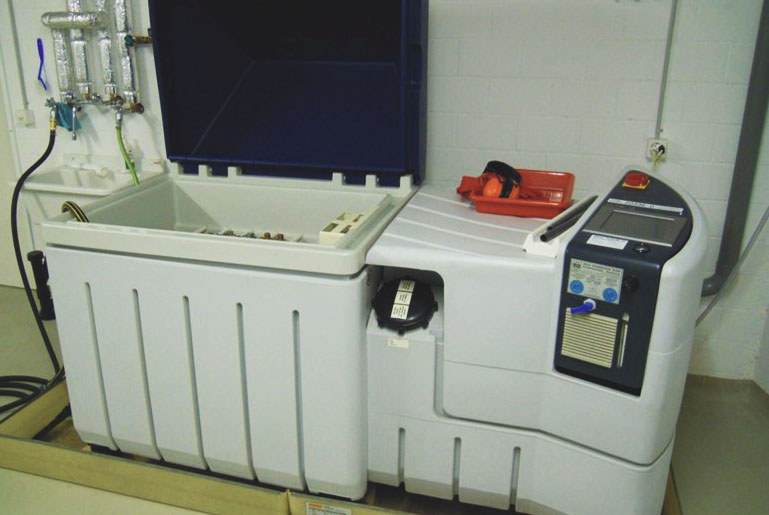How to assess the corrosion resistance
There are two major criteria to assess the corrosion resistance against salt water of a stainless steel based on material specifications: PREN Pitting Resistance Equivalent Number and CPT Critical Pitting Temperature, both depending on the contents of the material. For practical tests, a good and reliable indication is the salt mist test according IEC 60068-2-52.
Exact testing procedures to measure the PREN corrosion resistance of various types of stainless steel are specified in the ASTM G48 standard. Generally, the higher the PREN-value, the more corrosion resistant the steel is, and steels with PREN-values above 32 are considered seawater (corrosion) resistant. The PREN of 1.4404 (AISI316L) is 23…28.5 whereas the 1.4462 duplex steel is at 31…38, depending on the exact composition of contents.
There are different methods to assess the CPT which is defined as the “lowest temperature on the surface of the specimen at which stable propagating pitting occurs under specified test conditions” (ISO 17864:2005), some basic empiric rules of thumb based simply on the Molybdenum content. The CPT of 1.4404 (AISI316L) is between 24 and 27.5°C compared to 27.5…34.5°C of the 1.4462 duplex steel. Therefore, particularly for higher temperatures e.g. in tropical seawater, 1.4462 is the safer choice, with much better corrosion resistance than AISI316L and yet at lower cost than titanium. However, for even higher temperatures, high salt concentration or other corrosive contents of the liquid, there is still only one safe choice: Titanium.


Would you like to read the whitepaper later?
Do you have any questions about how to assess the corrosion resistance?

